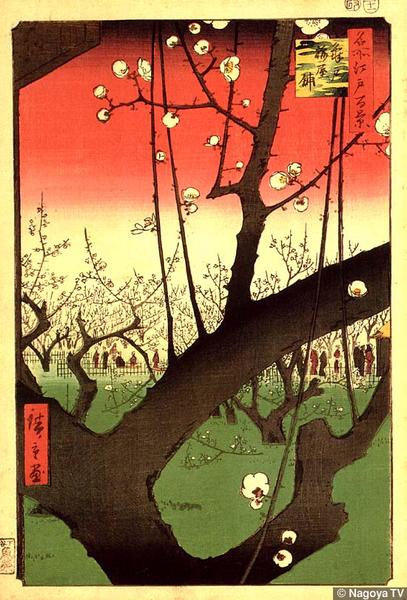Analytical Assessment of High Stakes Examination on Students and Teachers in Japanese Schools
Japan praises itself as one of the top academic countries in the world. Across the entire country standardized testing is a norm and a must in order to assure placement in the desired academic institution or workplace. A 'no fail' policy in primary school exists that ensures students go up to the next grade as a group. Nonetheless, Japan's educational policies have changed since the Edo period or Tokugawa era which was from 1603-1868 with Japan reinventing it after every political crisis.
The onset of WWII and the Manchurian incident of 1931 brought about the war time education act, which was meant to train small citizens loyalty to a country. After being defeated in 1945, the Governing Policy
on Education System in Japan was issued in October of that year, prohibiting the dissemination of
militarism and radical nationalism. (http://www.nier.go.jp/English/educationjapan/pdf/201109BE.pdf) The fundamental principles of education and the school system structure was reformed seven times in order to reflect the trends of the times. Today, the Japanese government has the Article 1 education act stating:
Education must be provided with the aim of fully developing the individual character, as we endeavor to cultivate a people that is sound in mind and body and imbued with the qualities that are necessary in the people who make up a peaceful and democratic nation and society. (http://www.nier.go.jp/English/educationjapan/pdf/201109BE.pdf)
The recent Article 1 Act aims to open the way to Japan's future and cultivate creativity and foster academic freedoms. AMICUS, my school, has implemented this Article 1 code, with the MEXT curriculum (Ministry of Education, Culture, Sports, Science and Technology). For one, we get funding from the Prefectural government if we adhere to the MEXT system, and second, it makes our school competitive and recognized across the country. Japanese schools in general are focused on creative development. For everything other than English development, Japanese schools are doing a great job. That is, until the age of 12, when students start standardized-testing, wiping out all signs of critical thinking, individuality and creativity.
When it comes to High Stakes Testing, the middle of January in Japan is known as 'examination hell'. Mothers go to Shinto Shrines to pray for their children's scores. Youth carry sacred dolls to give them luck on the exam. The National Center Test for University Admission is a culmination of all the intense years of study as early as kindergarten. (Timsit, 2018). There is only a handful of coveted universities in Japan. Many of the students who do not pass the High Stakes test would rather take a year off to study at a cram school and try again next year, than go to a lower tiered university. University status is so important in Japan because of the companies that hire only from these elite schools.
The impact of high stakes testing results in students developing depression, stress and feeling marginalized due to a competitive and punitive educational environment. Teachers as well suffer due to pressure and stress:
It is not only the students who are having a difficult time; the teachers are too. Many have to take time off work due to stress, while others create a life of drudgery for their pupils. Many Japanese seem to have lost their love for education and learning once they enroll in junior high school. Indeed, too much test-taking may result in shallow learning and a negative feeling toward school. (Burns, 2010)
At our school, Amicus International, we evaluate the students based on internal testing such as Eiken(English test written specifically for Japanese kids), Kanken(Japanese Kanji test) and LAS Links (American English test). Although our school is classified as an Article 1 school and gets funding from the prefectural government, we also teach half our day in English, which is unique in Japan, hence the high tuition.
Eiken is the Japanese-style English proficiency test catering to Japanese children. Kanken is the Japanese proficiency test, and LAS is simply an English test written by English speakers in America. American kids do poorly on the Eiken because it is written FOR Japanese kids who are learning English, so the questions do not make sense to them, but they do very well on the LAS. This showing the relativity, limitations and blind-sidedness of testing in general.
The LAS Links test is used at our school so that we can level the students into three groups per grade. Grade 3, for example, will have 3A, 3B and 3C, with C being the international class, A being the lowest level and B being the middle level. The teachers do not teach to the test and do not reward students, the class, nor themselves in any way. We use it as a gauge only for knowing student needs, abilities and level. This helps us prepare activities and projects accordingly.
We have to remember that as the times change so do the tests and the testing culture. There are some signs that things are changing in our new global village today. Although the course of study in classrooms over time has seen reforms for the better; testing is still an area in Japan that students find super stressful and even costly.
By the time the Olympic games hit Tokyo in 2020, the MEXT curriculum will have a NEW Center Test called 'Daigaku Nyugaku Kyotsu'. This test will be designed to assess critical thinking, judgment, and expression, so as to not only foster "the acquisition of knowledge and skills, but also the ability to adapt to different professional environments and market needs"(Timsit, 2018). Japan aims to maintain its competitive edge in the global economy by adapting its educational goals with the times and the job market of the 21st century and the unknown future.
References:
Burns, K. June 16th, 2010.
Japan and its standardized test-based education system. Retrieved February 19th 2018 from: https://japantoday.com/category/features/opinions/japan-and-its-standardized-test-based-education-system
Timsit, A. January 13th, 2018. Overhauling Japan's High-stakes University Admission System. Retrieved February 19th 2018. From: https://www.theatlantic.com/education/archive/2018/01/overhauling-japans-high-stakes-university-admission-system/550409/



